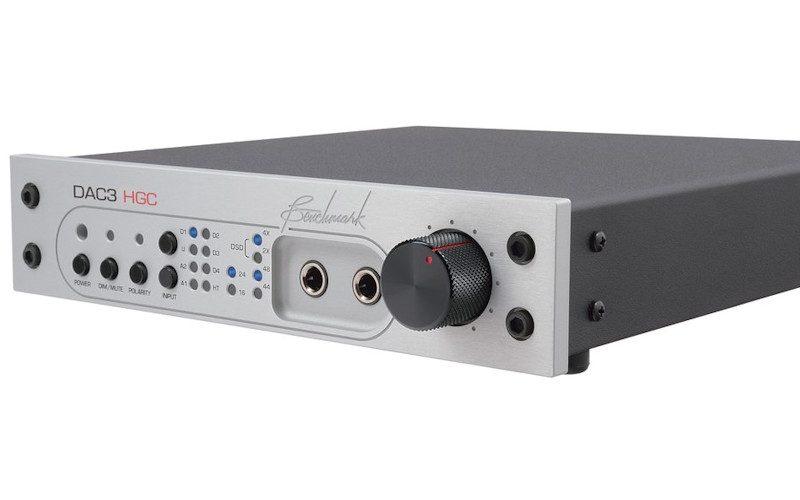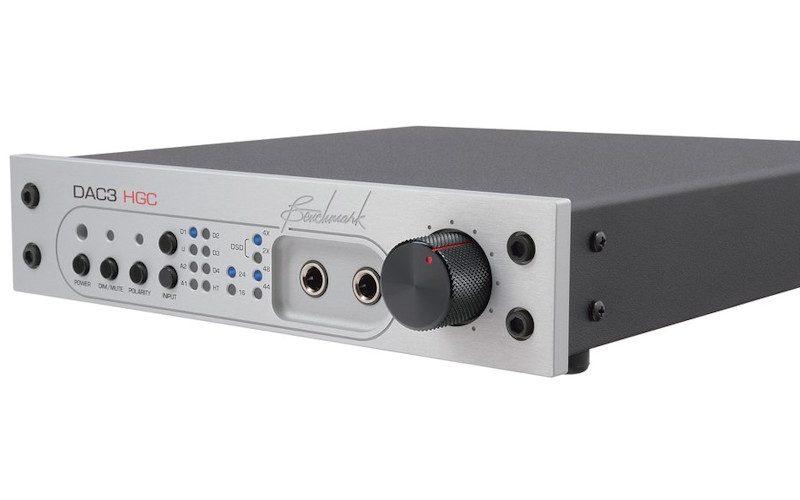

Ben Shyman is an AV reviewer based in New York City. His interest in audio/video gear began in the late 1980s when he worked as a salesman for a regional AV retail outlet in northern New Jersey, selling brands such as Adcom, Sony, Bose, Sunfire, Nakamichi, and Pioneer. He published his first review on AVRev.com in 2004. His specialties include bookshelf speakers, audiophile electronics, and high-resolution source components. Ben fully embraces the digital future of music, including streaming audio, and believes in high-end elegance and simplicity in constructing AV systems.
 Benchmark Media began in the mid-1980s providing audio equipment to television broadcast facilities. Today it is recognized amongst recording professionals and high-end audio enthusiasts for producing high-end, sonically transparent components. This philosophy is inherent in all of Benchmark's products--digital-to-analog converters, analog-to-digital converters, preamps, and amplifiers--and it plays right into the sweet spot of high-resolution audio.
Benchmark Media began in the mid-1980s providing audio equipment to television broadcast facilities. Today it is recognized amongst recording professionals and high-end audio enthusiasts for producing high-end, sonically transparent components. This philosophy is inherent in all of Benchmark's products--digital-to-analog converters, analog-to-digital converters, preamps, and amplifiers--and it plays right into the sweet spot of high-resolution audio.
The Benchmark DAC3 HGC ($2,195), released last November, is the next step in a progression of digital-to-analog converters, which began with the DAC1 over 10 years ago. I previously owned the DAC1 USB, which included a USB input and was one of the first DAC/headphone amplifiers suitable for high-end, two-channel stereo and computer audiophiles. So, after Benchmark announced the release of the DAC3 HGC, I was quick to contact the company and request a review sample. I was excited after reading about Benchmark's enthusiastic endorsement of the new ESS PRO SABRE chips and had a hunch that the new DAC3 could be a significant step forward in Benchmark's DAC lineage.
I auditioned the DAC3 both as a digital-to-analog converter through my reference Classé CP-800 preamplifier and as a preamplifier/DAC wired directly to several amplifiers, including the Pass Labs XA30.8 and First Watt SIT-2. All cables were from Wireworld.
Unpacking the DAC3 revealed an identical form factor and faceplate to the DAC2. In my experience, nothing with Benchmark is fancy. The components look as if they were designed for studio performance. If you are seeking slick, contemporary componentry with digital displays and backlit remotes, you will fare better shopping elsewhere. That does not mean, however, the DAC3 lacks first-rate build quality or functionality. The DAC3 is solidly built, despite being small and light. Features include a hybrid gain control (the digital and analog volume paths are discrete), a high-current preamp output with multiple settings that can be adjusted to better match the input sensitivity of your power amplifier, analog inputs, a headphone amplifier, a home theater pass-through, a 12-volt trigger, and the same heavy-duty metal remote control that the company has offered for years. The front panel includes eight LEDs that indicate which input is in use, as well as six LEDs that indicate sample rate and word length. This is incredibly helpful for confirming that the music going through the DAC3 is actually what your computer says it is outputting, but I found that the nomenclature was impossible to read at a distance and hard to interpret close up.
While the DAC3's aesthetics are identical to those of the DAC2, the similarities stop there. All major changes and upgrades are internal, the biggest being the ESS ES9028PRO digital-to-analog converter. As of this writing, only three companies utilize chips in the new ESS PRO lineup. Ayer Acoustics' QX-5 Twenty Digital Hub ($9,000) and OPPO's Sonica DAC ($799) both utilize the ES9038PRO digital-to-analog converter. Benchmark, on the other hand, elected for the ES9028PRO chip, using four of them in a balanced configuration.
When I spoke to Benchmark about the decision to use the ES9028PRO, they told me it was not a cost-related decision. They indicated that, as far as they could tell, processing in the ES9028PRO and ES9038PRO was similar. Although there is a nearly 10-dB reported difference between the signal-to-noise ratio in the ES9028PRO (129 dB) and the ES9038PRO (140 dB), there are few, if any, recordings that can approach either of these signal-to-noise ratios; and, in most systems, the amplifiers would be the limiting factor as far as noise is concerned. Benchmark discusses the lower distortion and noise of the new DAC3 on its website.
Although many of the improvements between the DAC3 and DAC2 are the result of utilizing the new ES9028PRO chip, others come from meaningful changes to Benchmark's analog support circuitry, such the newer proprietary voltage regulator circuits for each channel.
When I first began evaluating the DAC3, I was impressed with just how quiet it really is. The highly linear circuits in my Class A amplifiers make those components extremely quiet in their own right; yet, while listening to delicate piano passages from Bill Evans (Portrait in Jazz, Riverside, DSD64) and McCoy Tyner (McCoy Tyner with Stanley Clarke & Al Foster, Telarc Jazz, DSD64), I was able to enjoy, in remarkable fashion, stark contrast between more dynamic and quiet passages. I even turned up the volume to maximum with the source off, to try to hear any noise from my tweeters; and, strain as I did, I heard absolutely nothing. The DAC3 was quiet indeed.
The DAC3 also possesses an uncanny ability to resolve hidden details that typically get lost in a mix. With more resolved detail, the tonality of instruments sounds more real. As someone who played guitar for the better part of two decades, I felt like Laurence Juber (Altered Reality, Narada, TIDAL Hi-Fi), Richard Thomson (Acoustic Classics, TIDAL Hi-Fi) and Keb' Mo' (Just Like You, Epic, DSD64) were present and performing in my listening space. The vivacity and energy of their recordings took on new life and kept me fully engaged, even when re-listening to the tracks multiple times and finding new details to appreciate.
The DAC3 also consistently underscored the ability of my Pass Labs XA30.8 and First Watt SIT-2 to produce highly accurate, precise, three-dimensional soundstages. The front-to-back layers and horizontal placement of instruments and vocals in A Love Supreme, Live in Amsterdam by the Branford Marsalis Quartet (Sony Masterworks, 24/48) and 1 by The Beatles (EMI/Apple, TIDAL Hi-Fi) were delivered with punctuated accuracy. This was notable on some of the better-recorded and -remastered tracks on 1, where there was clear horizontal separation between Paul and John's vocals appearing vividly in front of Ringo's drum kit. Not only did lower frequencies have greater punch, but the mid-bass was smooth, and the highs contained a sweetness that--through the beryllium tweeters of my Focal Sopra N°1 bookshelf speakers--was something audiophiles dream of.
 High Points
High Points
• The DAC3 soundstage is highly accurate, and its sound is among the best at any price.
• The DAC3 is offered in three models: analog and digital inputs with headphone amplifier (HGC model, $2,195), analog and digital inputs with no headphone amplifier (L model, $1,895), and a digital-only version with no analog inputs but an AES/EBU input with headphone amplifier (DX model, $2,095). As a result, the DAC3 offers purchase and system integration flexibility.
• The DAC3 employs a state-of-the-art ES9028PRO SABRE digital-to-analog converter and will outlive the usual rapid technological obsolescence of most DACs.
• The headphone amplifier is a highly worthwhile addition to the HGC and DX models.
Low Points
• Nomenclature on the front faceplate of the DAC3 is hard to read and interpret.
• The DAC3 lacks an RS-232 input, making it more challenging to accommodate in a custom home audio installation.
• Benchmark intentionally chose to utilize the DAC2 USB drivers for the DAC3 to provide greater compatibility and prevent its customers from having to install multiple USB drivers. While on the surface this is okay, I thought seeing "Benchmark DAC2" listed in my Apple setup panels and Audirvana preferences menus was confusing and unfortunate.
Comparison and Competition
Right now, one can argue that the Benchmark DAC3 has few competitors. It employs a state-of-the-art chipset that only two other companies (Ayer and Oppo) use, and the prices on those products differ wildly from the DAC3. Over time, however, more products using ESS PRO chips will hit the market; and, if the team at Benchmark is right about the "magic" of these new processors, the question will be, "Can the DAC3 stand up?" Based on my listening tests, I believe it will. So perhaps the competition will be the upcoming products that use new ESS PRO chips and cost about two grand.
Conclusion
The Benchmark DAC3, despite showing no differences in the aesthetics department over the DAC2, is a meaningful step forward in digital-to-analog conversion. It utilizes a state-of-the-art chipset from ESS and is somewhat future-proof as a result, compared with other DACs. I never owned the DAC2, but I did own a DAC1 for several years, and the sonic improvement here is significant on many levels.
Like any component at any price, the DAC3 is not for everyone. However, if your priority is digital conversion of your favorite two-channel music and movies with purity and transparency, the DAC3 should receive your fullest consideration. It resolves digital sources with precision and finesse; and, whether you decide to use the DAC3 as a preamplifier/DAC or a standalone DAC, it is a complete winner and will be right at home in any audiophile two-channel system.
Additional Resources
• Check out our Digital-to-Analog Converter category page to read similar reviews.
To learn more about ESS Technology's chips, click here.
• Visit the Benchmark website for more product information.